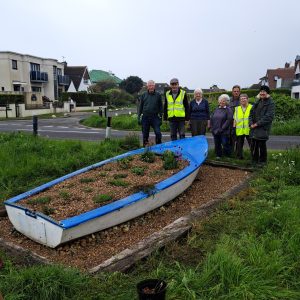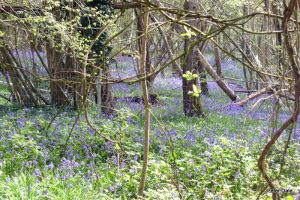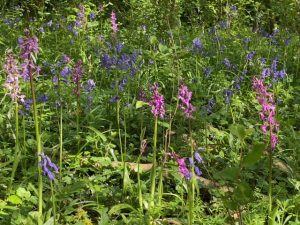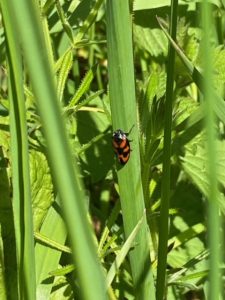At our most recent Community Project morning in May, the boat at the foot of Sea Lane received some much needed refurbishment due to it being overwhelmed by weeds and some inappropriate plants. The project was originally initiated some years ago by our late member, Tricia Hall, and it was always the intention to focus on maritime plants due to the location of the boat close to the sea, rather than the usual annual bedding plants seen in such displays.
On the day, the old plants were dug out and sorted, with the strongest being retained, and the top level of old compost and shingle was removed. This was then replaced by new compost and pea shingle, both very kindly donated by local businesses – Ferring Nurseries and Benton Weatherstone – to whom we’re very grateful. Finally, the original plants were replaced, together with another couple of new plants again donated by the nursery, and we hope they will now thrive without unwanted competition, whilst being attractive to pollinators.
We also plan to install a small plaque on the stern of the boat to indicate that it is maintained by volunteers from Ferring Conservation Group.



